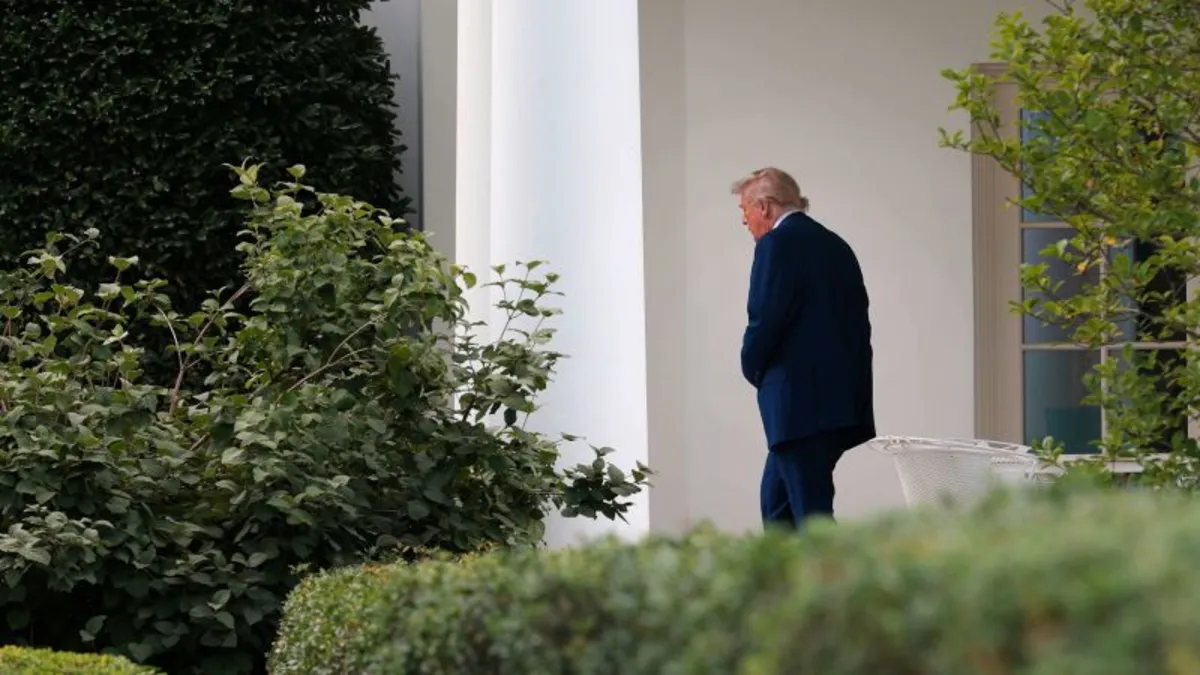
On Tuesday, President Donald Trump arrives in the Netherlands for a pivotal NATO summit, bringing with him a newly negotiated ceasefire that he hopes will bolster his image as a peacemaker. This ceasefire agreement, brokered between Israel and Iran, follows a day of intense diplomacy at the White House. However, shortly after the ceasefire was set to take effect, Israel accused Iran of launching missiles, promising a strong response, while Tehran denied any breach of the truce.
During his departure from the White House, Trump expressed his frustration over the situation, stating, “We basically have two countries that have been fighting so long and so hard that they don’t know what the [expletive] they’re doing.” He accused both Israel and Iran of violating the ceasefire he had just announced, although he indicated that he didn't believe the ceasefire had been entirely broken. "Israel, as soon as we made the deal, they came out and they dropped a load of bombs, the likes of which I’ve never seen before,” Trump said, highlighting his disappointment especially towards Israel.
If the ceasefire holds, Trump hopes it will serve as validation for the recent U.S. military strikes on Iran’s nuclear facilities, which have received mixed reactions from European leaders concerned about escalating tensions. The deal was facilitated with support from Qatar, marginalizing European involvement in the negotiation process. White House officials credited Trump's decision to launch airstrikes as a catalyst for the ceasefire agreement.
As Trump prepares to take the global stage once more, he aims to showcase his ability to mediate between conflicting parties, despite his challenges in addressing the ongoing war in Ukraine. The NATO summit was meticulously organized to prevent tensions, focusing on a concise final statement that aims to raise military spending targets to 5% of GDP, a demand Trump has consistently pushed. Ukrainian President Volodymyr Zelensky is expected to attend a pre-summit dinner, but his absence from the main summit underscores the challenges Ukraine faces in its NATO aspirations, which Trump has opposed.
Disagreements between Trump and European leaders regarding Ukraine have raised concerns about NATO's unified stance against Russia. Trump has shown hesitation in imposing new sanctions on Moscow, and has not approved additional military aid to Ukraine. This reluctance has prompted fears among European officials that Trump might even consider canceling his trip to the NATO summit.
Trump's approach to diplomacy seems to prioritize unilateral action over collaboration. Previously, a U.S. president who had just conducted significant military operations would typically engage with European allies to build coalitions. Instead, Trump has downplayed European efforts to mediate the conflict, asserting that Iran prefers to negotiate directly with the U.S. rather than involving European nations. This unilateral stance was evident when he departed early from the Group of 7 summit, opting to avoid discussions that could involve European leaders in the Iranian conflict.
Trump has consistently viewed multilateral organizations such as NATO and the G7 with skepticism, believing that direct bilateral interactions yield more effective results in international relations. He has criticized NATO as a mechanism for extracting resources from the U.S. to defend countries across the ocean. His calls for increased defense spending among NATO allies have led to more nations meeting the alliance's spending threshold than when he first took office in 2017. However, he continues to assert that these efforts are insufficient, especially in light of the ongoing war in Ukraine.
As Trump navigates this complex landscape of international diplomacy, the recent tensions in the Middle East may overshadow critical discussions about the conflict in Europe, highlighting the intricate balance of power and influence on the global stage.